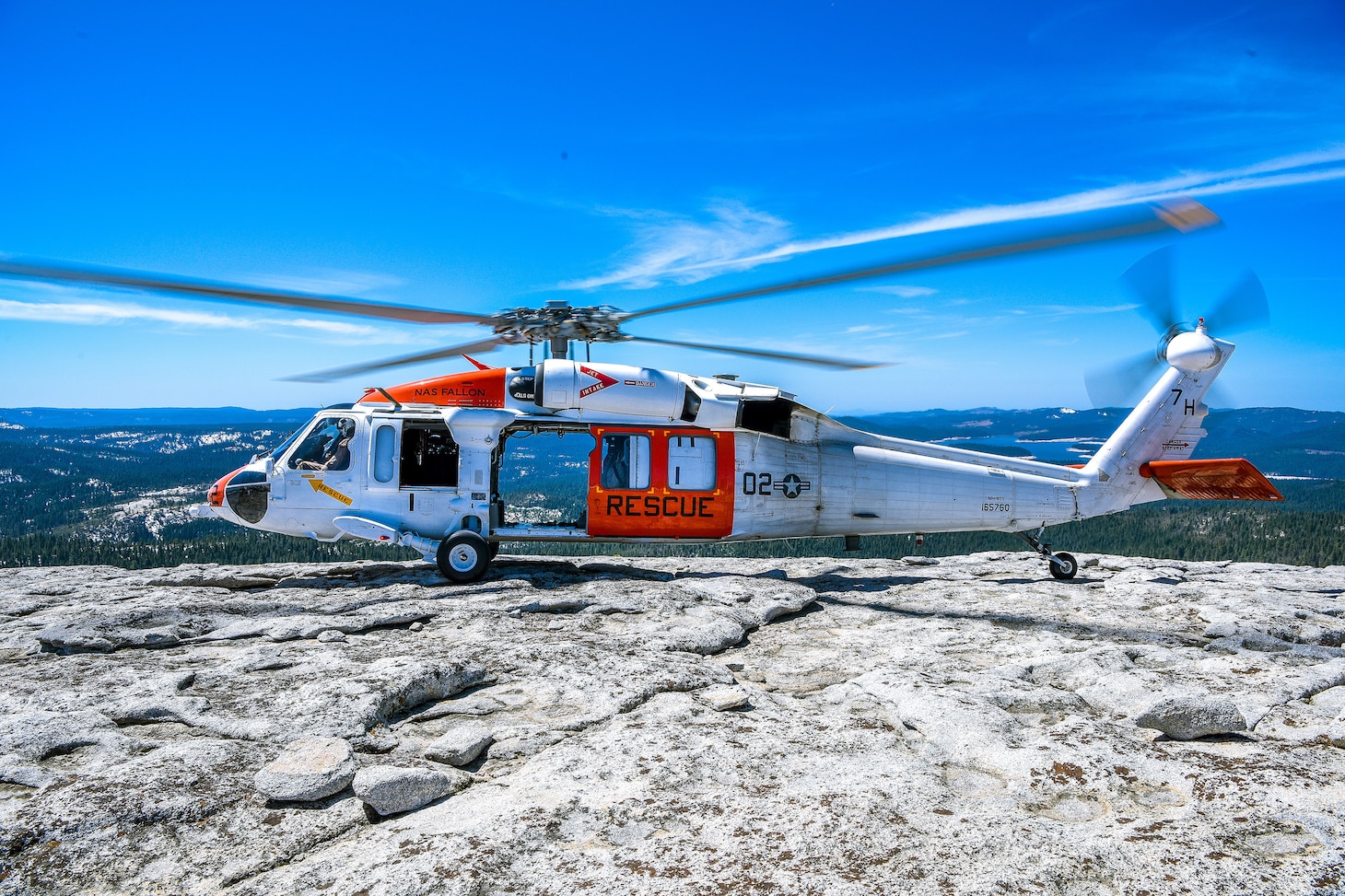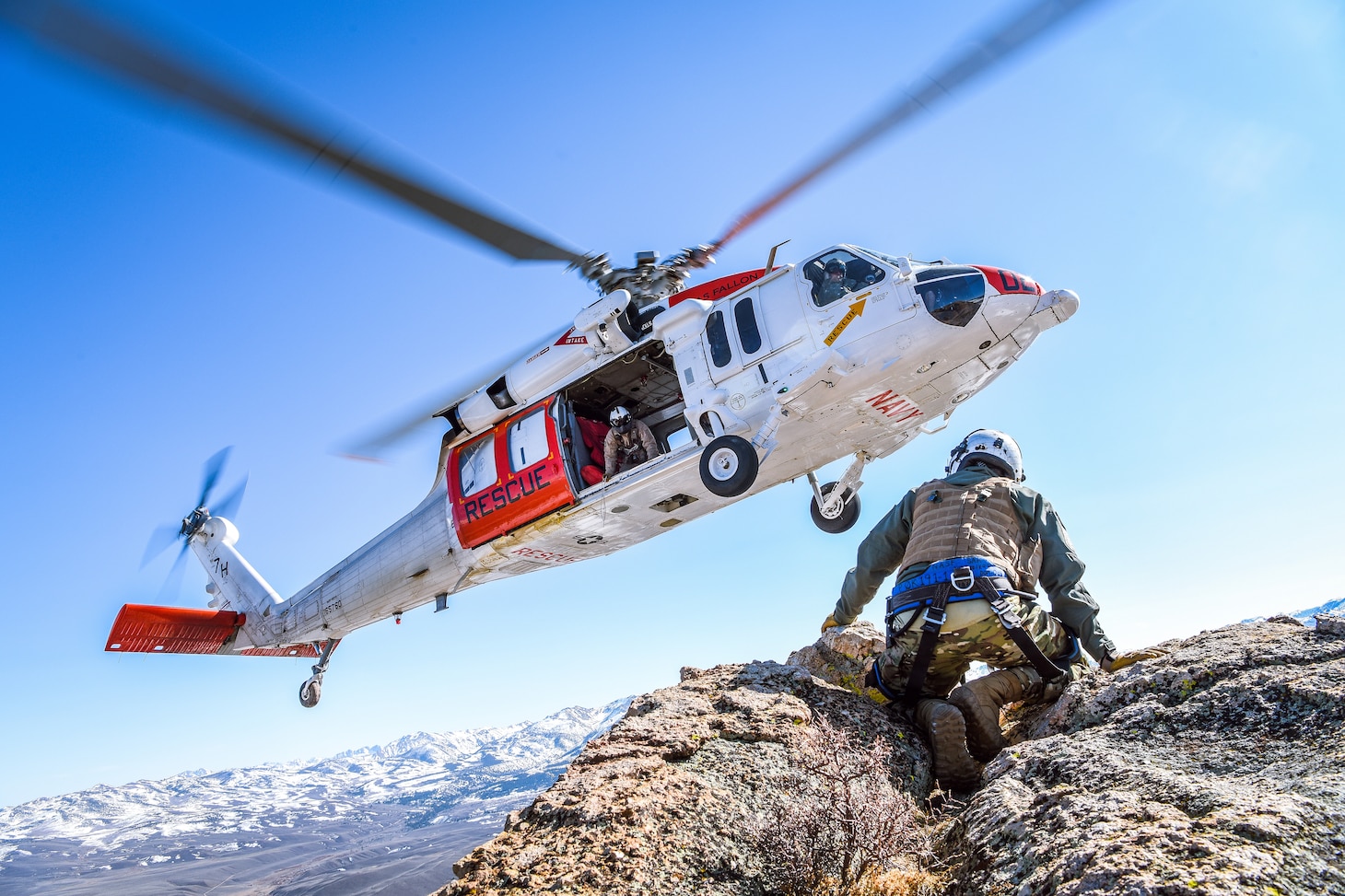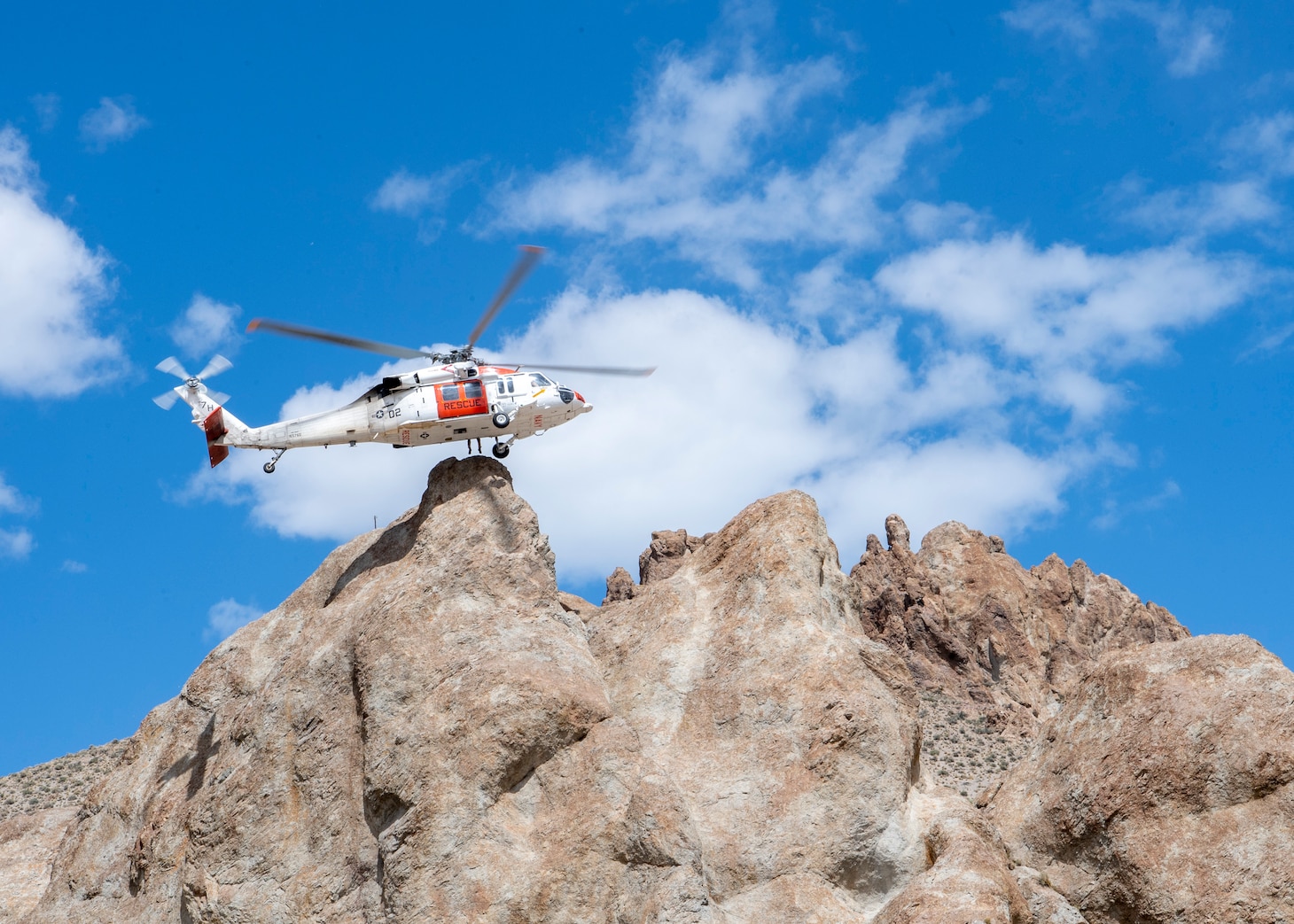
210409-N-FC670-060
FILE PHOTO - FALLON, Nev. (April 9, 2021) An MH-60S Knighthawk helicopter assigned to the "Longhorns" of Helicopter Search and Rescue (SAR) Squadron, lands during a Last Final Flight (LFF). The Navy currently has six dedicated "Station SAR" units located around the US. Lemoore SAR Calif., Fallon SAR Nev., Whidbey Island SAR Wash., China Lake SAR (VX-31) Calif., PAX River SAR Md., and Key West SAR Fla. Their primary mission is to provide search and rescue and first responder support for Fleet flight training operations for the jets in their designated areas of responsibilities. Secondary to that, station SARs also work closely with local agencies to be a first responder to anyone in legitimate danger. Other missions may include RT&D support, HELITACK aerial firefighting, and general utility helicopter operations. Pursuant to the National SAR Plan of the United States, the unit may also be used for civil SAR/MEDEVAC needs to the fullest extent practicable on a non-interference basis, with primary military duties according to applicable national directives, plans, guidelines and agreements. (U.S. Navy photo by Chief Mass Communication Specialist Shannon Renfroe)
The aircraft, call sign Longhorn 02, was supporting Mono County search and rescue efforts to locate a lost hiker in the rugged high-altitude terrain in the National Forest south of Boundary Peak, 120 miles south of NAS Fallon. The aircrew consists of four personnel -- a pilot, co-pilot, and two crewmen.

210408-N-FC670-626
FILE PHOTO - FALLON, Nev. (April 8, 2021) An MH-60S Knighthawk helicopter assigned to the "Longhorns" of Helicopter Search and Rescue (SAR) Squadron, practices pinnacle landings and extractions during a mountain flying SAR training event. The Navy currently has six dedicated "Station SAR" units located around the US. Lemoore SAR Calif., Fallon SAR Nev., Whidbey Island SAR Wash., China Lake SAR (VX-31) Calif., Pax River SAR Md., and Key West SAR Fla. Their primary mission is to provide search and rescue and first responder support for Fleet flight training operations for the jets in their designated areas of responsibilities. Secondary to that, station SARs also work closely with local agencies to be a first responder to anyone in legitimate danger. Other missions may include RT&D support, HELITACK aerial firefighting, and general utility helicopter operations. Pursuant to the National SAR Plan of the United States, the unit may also be used for civil SAR/MEDEVAC needs to the fullest extent practicable on a non-interference basis, with primary military duties according to applicable national directives, plans, guidelines and agreements. (U.S. Navy photo by Chief Mass Communication Specialist Shannon Renfroe)
The crash site is at 11,700 feet above sea level, in very rugged terrain. The crew were able to communicate following the impact, but a follow-on helicopter mission launched Friday evening from NAS Fallon was unable to retrieve them. An overnight kit was dropped to the survivors, who spent the night on mountain.
On Saturday morning, an additional MH-60, Longhorn 01, launched from NAS Fallon, and provided on-scene coordination, but could not affect a rescue. A CH-47 Chinook from Mather Air Force Base was called in for its superior high-altitude performance characteristics. . It dropped off a ground SAR team that met up with the survivors while the CH-47 returned to Mammoth Lakes for fuel. The Chinook returned to the scene, and at approximately 2 p.m., the crew of Longhorn 02 was safely recovered aboard the CH-47.

210415-N-PH222-2551
FALLON, Nev. (April 15, 2021) An MH-60S Knighthawk helicopter, assigned to the "Longhorns" of Helicopter Search and Rescue (SAR) Squadron, conducts a one wheel during a simulated SAR training exercise. The Navy currently has six dedicated "Station SAR" units located around the US. Lemoore SAR Calif., Fallon SAR Nev., Whidbey Island SAR Wash., China Lake SAR (VX-31) Calif., PAX River SAR Md., and Key West SAR Fla. Their primary mission is to provide search and rescue and first responder support for Fleet flight training operations for the jets in their designated areas of responsibilities. Secondary to that, station SARs also work closely with local agencies to be a first responder to anyone in legitimate danger. Other missions may include RT&D support, HELITACK aerial firefighting, and general utility helicopter operations. Pursuant to the National SAR Plan of the United States, the unit may also be used for civil SAR/MEDEVAC needs to the fullest extent practicable on a non-interference basis, with primary military duties according to applicable national directives, plans, guidelines and agreements. (U.S. Navy photo by Mass Communication Specialist 2nd Class Ryan M. Breeden)
All military support for civil mutual aid SAR missions are coordinated by the Air Force Rescue Coordination Center (AFRCC) at Tyndall Air Force Base, Florida. Pursuant to the National SAR Plan of the United States, military aircraft may also be used for civil SAR/MEDEVAC needs to the fullest extent practicable on a non-interference basis with primary military duties according to applicable national directives, plans, guidelines and agreements.
The cause of the crash is unknown. The Navy will conduct a mishap investigation, with support from the Naval Safety Center. Following the on-site investigation, the aircraft will be removed from its current position on U.S. Forest Service land.









